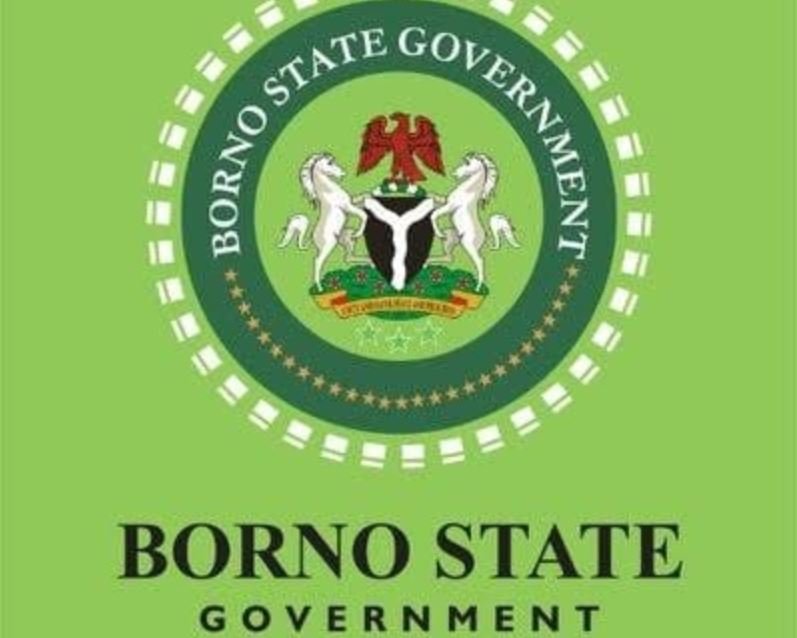The population of Borno State is projected to be approximately 6.65 million in 2025, with a growth of about 8.8% from 2022’s estimated population of 6.11 million.
This growth aligns with steady population growth trends observed in the state due to high birth rates and gradual recovery from past conflicts.
READ ALSO: Facts About Benue State Population In (2025)
How Has Borno State’s Population Changed Over The Years?
Looking back, the 1991 census recorded the Borno state population at 2,536,003. However, this census faced criticism for undercounting, with experts suggesting the real numbers could be higher.
By 2006, the population had grown to 4,171,104. In 2016, estimates put the population at approximately 5,860,183, showing a steady upward trend, despite the ongoing challenges of the Boko Haram insurgency, which caused instability in the region.
By 2022, the population was estimated to have reached about 6,111,500. Despite security issues and displacement continuing to affect the area, the population kept growing.
Projections for January 2025 estimate the population to be around 6.65 million. That said, many factors have influenced these population changes.
The Boko Haram insurgency caused general displacement, with many residents forced to leave their homes, affecting both the population size and its distribution across the state. However, Borno has a very young population and high fertility rates, which contribute to its rapid growth.
Recovery efforts in the region have also played a part, as initiatives to stabilize the area have encouraged many people to return and rebuild their communities.
READ ALSO: Facts About Bauchi State Population In (2025)
Borno State Population By Local Government Area
| No | Local Government Area | Population Projection (2025) |
|---|---|---|
| 1 | Abadam | 115,432 |
| 2 | Askira/Uba | 164,789 |
| 3 | Bama | 455,678 |
| 4 | Bayo | 91,234 |
| 5 | Biu | 295,456 |
| 6 | Chibok | 76,123 |
| 7 | Damboa | 392,456 |
| 8 | Dikwa | 177,345 |
| 9 | Gubio | 254,789 |
| 10 | Guzamala | 162,456 |
| 11 | Gwoza | 465,789 |
| 12 | Hawul | 203,456 |
| 13 | Jere | 351,234 |
| 14 | Kaga | 151,456 |
| 15 | Kala/Balge | 102,345 |
| 16 | Konduga | 181,234 |
| 17 | Kukawa | 234,567 |
| 18 | Kwaya Kusar | 65,123 |
| 19 | Mafa | 174,678 |
| 20 | Magumeri | 236,789 |
| 21 | Maiduguri | 1,008,123 |
| 22 | Marte | 217,456 |
| 23 | Mobbar | 138,123 |
| 24 | Monguno | 185,678 |
| 25 | Ngala | 400,123 |
| 26 | Nganzai | 114,345 |
| 27 | Shani | 170,234 |
The Demographics Of Borno State In 2025
Age
| Age Group | Population | Percentage |
|---|---|---|
| 0–4 | 1,000,000 | 15.0% |
| 5–9 | 900,000 | 13.5% |
| 10–14 | 800,000 | 12.0% |
| 15–19 | 700,000 | 10.5% |
| 20–24 | 600,000 | 9.0% |
| 25–29 | 500,000 | 7.5% |
| 30–34 | 400,000 | 6.0% |
| 35–39 | 350,000 | 5.3% |
| 40–44 | 300,000 | 4.5% |
| 45–49 | 250,000 | 3.8% |
| 50–54 | 200,000 | 3.0% |
| 55–59 | 150,000 | 2.3% |
| 60+ | 200,000 | 3.0% |
Gender
| Gender | Population | Percentage |
|---|---|---|
| Male | 3,315,000 | 46.5% |
| Female | 3,335,000 | 53.5% |
Ethnic
| Ethnic Group | Population | Percentage |
|---|---|---|
| Kanuri | 2,500,000 | 37.6% |
| Shuwa Arab | 1,200,000 | 18.0% |
| Babur/Bura | 800,000 | 12.0% |
| Marghi | 600,000 | 9.0% |
| Other Ethnicities (including Hausa and Fulani) | 1,550,000 | 23.4% |
Urban And Rural Population
| Area | Population | Percentage |
|---|---|---|
| Urban | 2,200,000 | 33.1% |
| Rural | 4,450,000 | 66.9% |

